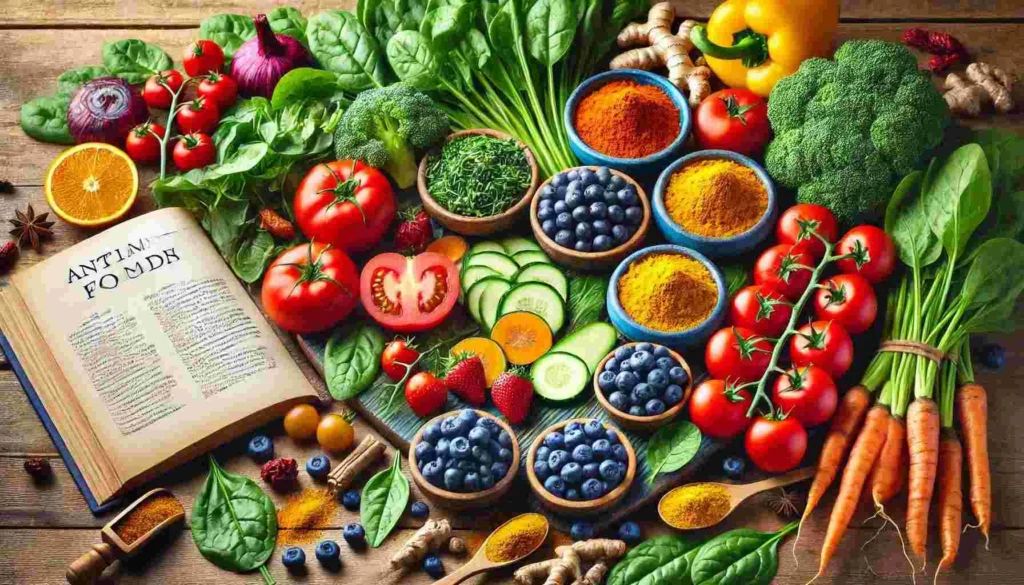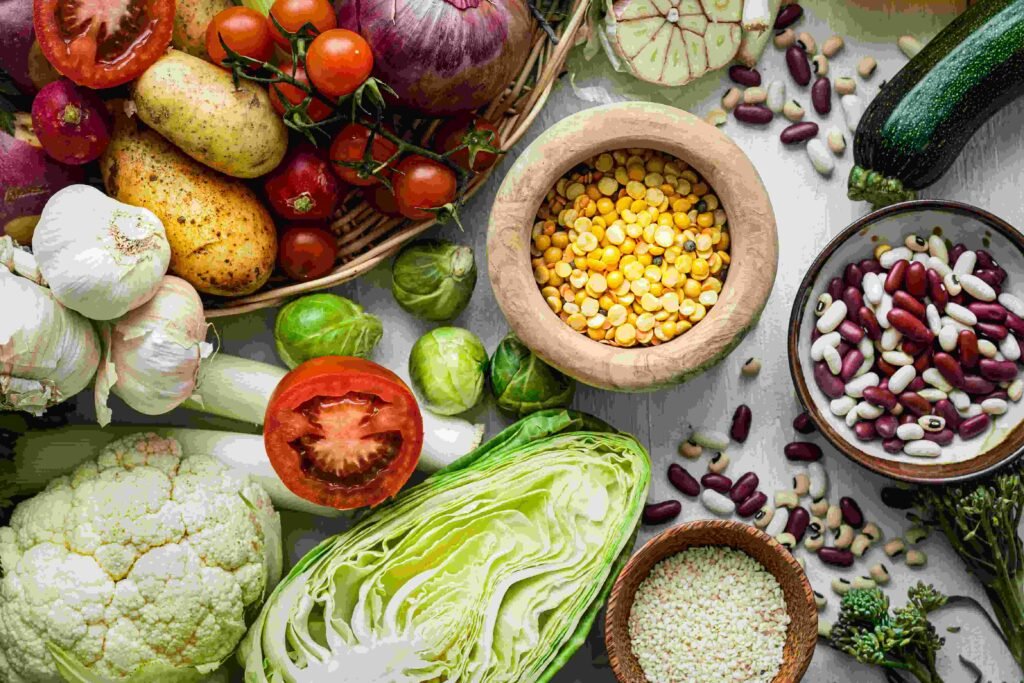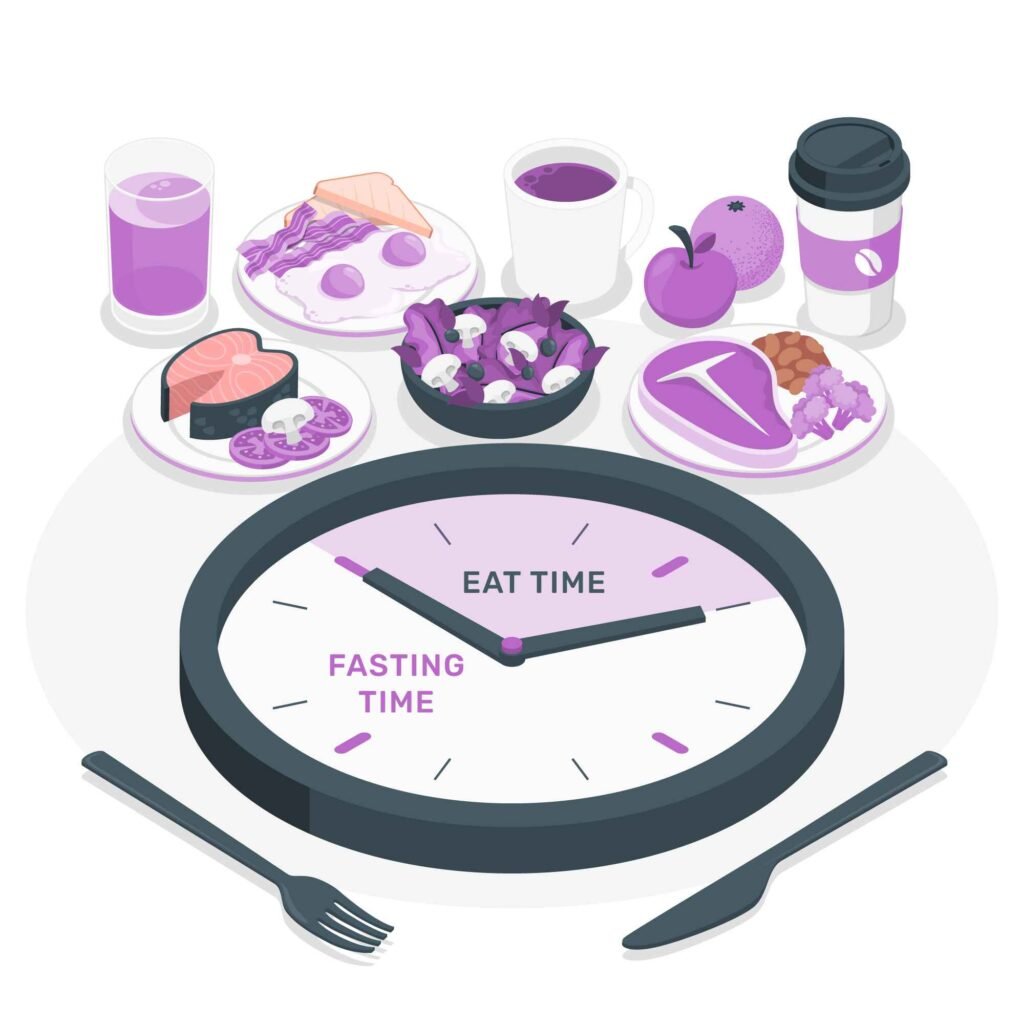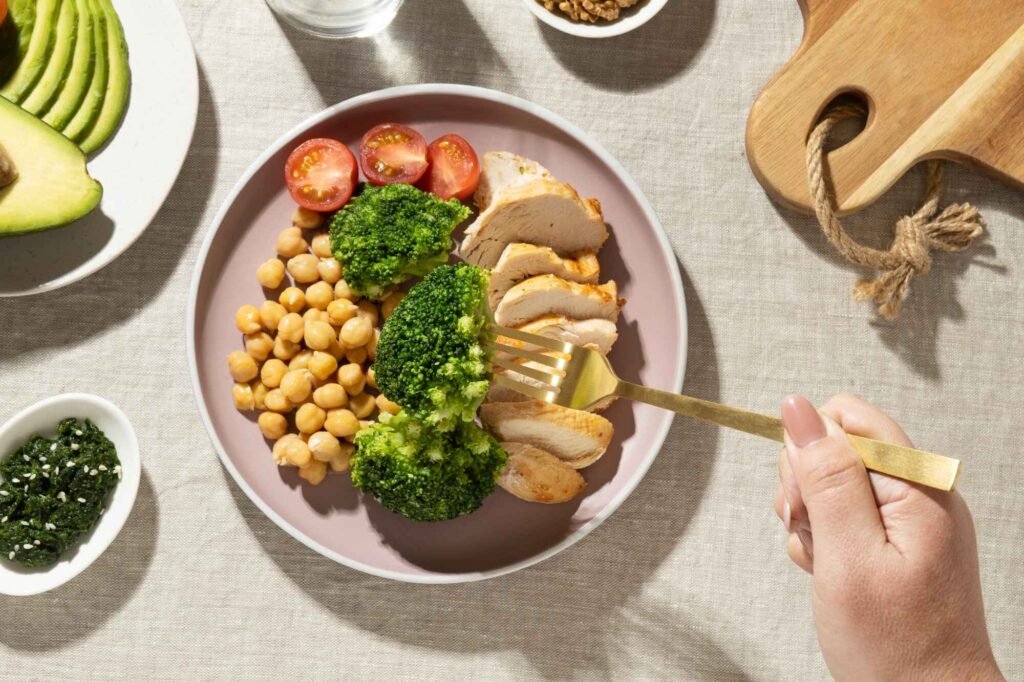
Incorporating Anti-Inflammatory Foods into Your Diet
Introduction to Inflammation and Its Impact on Health
Inflammation is a natural response by the immune system to injury or infection. However, chronic inflammation can lead to long-term health issues, including heart disease, diabetes, arthritis, and even cancer. Diet plays a crucial role in managing inflammation, with anti-inflammatory foods being a powerful way to reduce its harmful effects.
By incorporating nutrient-rich, anti-inflammatory foods into your meals, you can improve overall well-being and lower the risk of chronic diseases. Let’s explore how you can transform your diet for better health.
What Are Anti-Inflammatory Foods?
Understanding Anti-Inflammatory Properties
Anti-inflammatory foods are those that combat inflammation in the body by reducing oxidative stress, neutralizing free radicals, and supporting healthy immune responses. These foods are rich in antioxidants, omega-3 fatty acids, vitamins, and minerals.
Some of the most effective anti-inflammatory components include:
- Polyphenols: Found in fruits like berries and vegetables.
- Omega-3 Fatty Acids: Found in fish, flaxseeds, and walnuts.
- Flavonoids: Found in dark chocolate, tea, and citrus fruits.
Examples of Anti-Inflammatory Foods
- Berries – Blueberries, strawberries, and blackberries are rich in antioxidants like anthocyanins.
- Fatty Fish – Salmon, mackerel, and sardines are excellent sources of omega-3s.
- Leafy Greens – Spinach, kale, and Swiss chard contain high levels of vitamins and minerals.
- Nuts and Seeds – Almonds, walnuts, flaxseeds, and chia seeds provide healthy fats.
- Spices – Turmeric and ginger are known for their potent anti-inflammatory properties.
Benefits of Anti-Inflammatory Foods
Reducing Risk of Chronic Diseases
A diet rich in anti-inflammatory foods can help prevent conditions like:
- Heart Disease: Omega-3 fatty acids lower triglycerides and reduce arterial inflammation.
- Type 2 Diabetes: Anti-inflammatory foods help regulate blood sugar levels.
- Arthritis: These foods alleviate joint pain and swelling.
Improving Gut Health
Many anti-inflammatory foods, such as yogurt, kefir, and sauerkraut, are rich in probiotics, which promote a healthy gut microbiome. A balanced gut can significantly reduce inflammation markers.
Boosting Energy Levels
By reducing inflammation, these foods support better nutrient absorption and energy production, making you feel more active and focused.
Practical Tips for Incorporating Anti-Inflammatory Foods
Start Small with Daily Changes
- Add a handful of berries to your breakfast cereal or smoothie.
- Use olive oil instead of butter for cooking.
- Snack on nuts and seeds instead of processed chips.
Plan Balanced Meals
Ensure every meal includes a variety of anti-inflammatory ingredients. For example:
- Breakfast: A bowl of oatmeal topped with fresh berries and flaxseeds.
- Lunch: A colorful salad with spinach, avocado, grilled salmon, and olive oil dressing.
- Dinner: A quinoa bowl with roasted vegetables, turmeric-spiced chicken, and a side of leafy greens.
Hydrate with Herbal Teas
Replace sugary drinks with green tea or chamomile tea, both of which have anti-inflammatory properties.
Creating an Anti-Inflammatory Meal Plan
Incorporating anti-inflammatory foods doesn’t have to be complicated. By planning ahead, you can make healthy, inflammation-fighting choices a natural part of your daily routine. Here’s a guide to building a meal plan that supports your health and well-being.
Focus on Variety and Balance
Diversity is essential when fighting inflammation. Including a wide range of fruits, vegetables, proteins, and healthy fats helps maximize nutrient intake. For example, colorful vegetables like bell peppers, carrots, and broccoli offer essential vitamins and antioxidants. Similarly, whole grains such as brown rice, quinoa, and oats provide fiber that aids digestion. Adding healthy proteins like fish, legumes, and tofu ensures you get the amino acids necessary for muscle repair and overall health.
In each meal, aim for a balanced plate. Try filling half of it with vegetables, a quarter with protein, and the remaining portion with whole grains. This approach not only helps reduce inflammation but also keeps you full and energized.
Sample Meal Ideas for a Week
Planning your meals in advance makes it easier to stay on track. Here are some simple meal ideas to inspire your weekly menu:
- Morning Meal:
Start your day with Greek yogurt topped with blueberries, chia seeds, and a drizzle of honey. Alternatively, a bowl of oatmeal with sliced apples, walnuts, and cinnamon provides a warm, satisfying option. - Midday Meal:
For lunch, try a spinach and avocado salad topped with grilled salmon and an olive oil dressing. A quinoa and vegetable bowl with a lemon-turmeric vinaigrette is another nourishing option. - Evening Meal:
Dinner could feature baked chicken with roasted sweet potatoes and steamed green beans. Alternatively, stir-fried tofu with bell peppers, broccoli, and brown rice makes a satisfying and plant-based option.
Mix and match these ideas to create a plan that suits your tastes and schedule. By rotating different ingredients, you can prevent mealtime boredom and ensure a well-rounded diet.
Quick and Easy Anti-Inflammatory Recipes
Incorporating anti-inflammatory foods becomes easier when you have a few go-to recipes. These simple dishes are packed with flavor and nutrients, making healthy eating enjoyable.
Turmeric-Ginger Smoothie
This vibrant smoothie is a refreshing way to boost your day with anti-inflammatory ingredients.
Ingredients:
- 1 cup unsweetened almond milk
- 1 banana
- 1 teaspoon grated fresh ginger
- 1 teaspoon turmeric powder
- 1 tablespoon chia seeds
- Honey to taste (optional)
Instructions:
Combine all ingredients in a blender. Blend until smooth, then pour into a glass and enjoy. This smoothie is perfect for breakfast or a post-workout snack.
Salmon with Lemon-Herb Quinoa
This dish pairs heart-healthy salmon with nutrient-dense quinoa, creating a satisfying meal.
Ingredients:
- Salmon fillets
- 1 cup quinoa
- 2 cups water or vegetable broth
- Juice of one lemon
- 2 tablespoons olive oil
- Fresh parsley, chopped
- Salt and pepper to taste
Instructions:
First, cook the quinoa in water or broth until tender. While it cooks, season the salmon with lemon juice, salt, and pepper. Then, sauté the salmon in olive oil until it’s golden and cooked through. Serve the salmon on a bed of quinoa and garnish with fresh parsley.
Overcoming Challenges of an Anti-Inflammatory Diet
Switching to an anti-inflammatory diet can come with a few challenges. However, with the right strategies, you can overcome these obstacles and make healthy eating a sustainable habit.
Finding Time for Meal Prep
One of the biggest hurdles is finding time to prepare healthy meals. To simplify this, consider batch cooking on weekends. Preparing soups, stews, or roasted vegetables ahead of time makes it easy to grab nutritious meals during busy weekdays. Also, opt for simple recipes that take 30 minutes or less to prepare.
Managing Food Costs
Fresh ingredients can sometimes be expensive, but there are budget-friendly solutions. Frozen fruits and vegetables are a great alternative; they’re just as nutritious and often more affordable. Buying grains, nuts, and seeds in bulk can also help you save money and reduce trips to the store.
Curbing Cravings for Processed Foods
Cravings for processed snacks can derail your efforts. To combat this, keep healthy alternatives on hand. For example, roasted chickpeas, almonds, or air-popped popcorn are satisfying substitutes for chips. When you’re craving something sweet, reach for fresh fruit or a small piece of dark chocolate. Practicing mindful eating can also help you identify the triggers behind your cravings.
Staying Consistent for Lasting Benefits
Consistency is essential to experience the full benefits of an anti-inflammatory diet. To stay on track, make meal planning a regular habit. Keeping a grocery list and prepping ingredients ahead of time helps eliminate last-minute unhealthy choices. Additionally, follow health and wellness blogs or social media accounts for new recipes and inspiration.
Tracking your progress in a food journal can also be motivating. Note how different foods affect your energy, mood, and inflammation levels. Over time, these insights will help you refine your diet and enjoy lasting health benefits.
By adopting these habits, incorporating anti-inflammatory foods will soon become second nature. You’ll not only feel healthier but also have more energy to live life to the fullest.
Incorporating Anti-Inflammatory Foods into Your Daily Life
Maintaining an anti-inflammatory diet is more than just focusing on your main meals. It’s about making mindful choices throughout the day. By integrating simple habits and healthy snacks into your routine, you can reduce inflammation consistently and enjoy long-term health benefits. Let’s explore practical ways to make anti-inflammatory foods a seamless part of your lifestyle.
Simple and Nutritious Anti-Inflammatory Snacks
Snacking often presents a challenge when trying to eat healthily. Fortunately, with a little planning, it’s easy to choose snacks that support your anti-inflammatory goals. Healthy snacks provide sustained energy, reduce inflammation, and curb cravings.
Nut and Seed Mix is a convenient option that offers omega-3 fatty acids and healthy fats. Almonds, walnuts, pumpkin seeds, and flaxseeds make a satisfying combination. For a refreshing crunch, pair hummus with fresh vegetables like carrots, bell peppers, and cucumbers. This snack is rich in fiber, antioxidants, and plant-based protein.
If you’re craving something sweet, apple slices with almond butter strike a perfect balance between natural sugars and healthy fats. For a protein-rich option, try Greek yogurt topped with fresh berries. This combination is loaded with probiotics and antioxidants, which promote gut health and reduce inflammation.
Another satisfying option is dark chocolate with nuts. Opt for chocolate that contains at least 70% cocoa and enjoy a small piece with a handful of walnuts or almonds for a guilt-free treat.
Refreshing Anti-Inflammatory Beverages
What you drink is just as important as what you eat. Replacing sugary beverages with healthier options can make a significant difference in managing inflammation. Hydrating with anti-inflammatory drinks is an easy way to boost your health.
Green tea is an excellent choice, thanks to its high antioxidant content. Catechins found in green tea help reduce inflammation and support heart health. If you’re in the mood for something warm and soothing, try golden milk. This comforting drink blends turmeric, ginger, cinnamon, and almond milk. The curcumin in turmeric is renowned for its anti-inflammatory properties.
For a hydrating option, infuse water with ginger and lemon. This simple drink aids digestion and helps flush out toxins. Smoothies made with ingredients like spinach, blueberries, and chia seeds are another great way to pack in nutrients and fight inflammation. Finally, chamomile tea is known not only for its calming properties but also for its ability to reduce inflammation and promote better sleep.
Exercise and Movement to Complement Your Diet
While an anti-inflammatory diet is essential, regular physical activity enhances its benefits. Exercise helps lower chronic inflammation by improving circulation, balancing hormones, and supporting overall well-being. The key is to choose activities you enjoy and can maintain consistently.
Gentle activities like walking, cycling, or swimming improve cardiovascular health and reduce inflammation. Incorporating yoga and stretching routines can help lower stress levels, which is crucial since stress contributes to inflammation. Poses such as Child’s Pose, Cat-Cow, and Downward Dog promote relaxation and flexibility.
For building strength, consider resistance training using weights, resistance bands, or bodyweight exercises. This type of movement supports muscle health and joint function, which can help reduce inflammatory pain. Additionally, practicing breathing exercises and mindfulness techniques can help manage stress and support the body’s natural healing processes.
Staying Motivated and Consistent
Making an anti-inflammatory diet part of your lifestyle requires commitment and motivation. However, by adopting a few practical strategies, you can stay inspired and make healthy choices effortlessly.
Tracking your progress is a powerful way to stay motivated. Keeping a food and mood journal helps you observe patterns and identify how certain foods affect your energy levels, mood, and inflammation. Over time, this awareness makes it easier to stick with your goals.
Setting realistic expectations is another key to success. Rather than overhauling your diet overnight, focus on small, achievable changes. For instance, swap one processed snack for a healthier alternative or try one new anti-inflammatory recipe each week. Gradual changes are more likely to become lasting habits.
Surrounding yourself with supportive people can also help. Joining online communities or connecting with friends who have similar health goals provides encouragement and accountability. Sharing recipes, tips, and challenges makes the journey more enjoyable.
To keep things interesting, explore new recipes and cooking techniques. Experimenting with different flavors and cuisines prevents boredom and helps you discover new favorite dishes. Incorporating global cuisines that emphasize fresh, anti-inflammatory ingredients — such as Mediterranean or Asian-inspired meals — can keep your meal planning exciting.
Don’t forget to celebrate small victories. Every healthy choice, no matter how small, is a step toward better health. Whether you’ve successfully meal-prepped for the week or swapped soda for green tea, acknowledging your efforts helps maintain motivation.
The Lasting Impact of an Anti-Inflammatory Diet
Adopting an anti-inflammatory diet is an investment in your long-term health. The benefits extend far beyond immediate improvements, enhancing your overall quality of life. By consistently making healthier choices, you can expect to feel more energized, experience better digestion, and reduce the risk of chronic diseases.
Moreover, reducing inflammation can lead to clearer skin, improved mood, and enhanced mental clarity. Inflammation is often linked to conditions like anxiety and depression, so lowering it supports better emotional well-being. Over time, these positive changes add up, allowing you to live a fuller, healthier life.
Remember, it’s not about perfection — it’s about progress. Each meal, snack, and beverage choice is an opportunity to support your health. By staying committed, you’ll find that incorporating anti-inflammatory foods becomes second nature.
Embrace the journey, stay curious, and enjoy the vibrant, healthy life that comes from nourishing your body with care.



